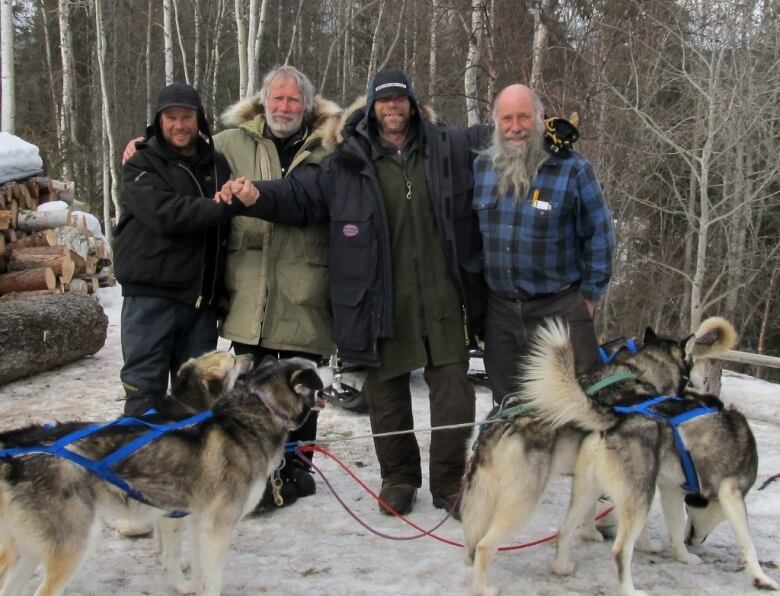British adventurer retraces Roald Amundsen's 1905 dogsled journey
Tim Oakley and his three-man team recently travelled 1,100 kilometres from Hershel Island to Eagle, Alaska

A team of adventurers has retraced the 1,100-kilometre dogsled journey Norwegian explorer Roald Amundsen made in 1905 to find a telegraph to tell the world he had successfully navigated the Northwest Passage.
Tim Oakleyand his three-man, 22-dog team endured four weeks of extreme terrain and frigid temperatures to travel from Hershel Island which lies about five kilometres off the coast of the Yukon and is considered the territory's northernmost point to Eagle, Alaska.
Last month they arrived in Eagle, becoming the first people to successfully recreate the trip Amundsen had done 111 years prior.
"It was very emotional. I just rung my wife [on the satellite phone] and said that we'd done it," recalled a teary Oakleyof their arrival.
A 50/50 chance
"At the beginning I thought we only had a 50/50 chance of achieving the journey," he said.
Oakley started planning the expedition more than four years ago, after a visit to the National Maritime Museum in Greenwich, England.
"I've done other sledging journeys, but they were other people's expeditions and I wanted to do one of my own," he said.
"I saw the Amundsen journey, and I thought that would be really neat."
A brutal journey
Oakley said he knew the trip would be difficult, but the early days were by far the most trying part of the journey.

"We knew that the FirthRiver was going to be difficult. It has a lot of canyons and there's a lot of overflow up there," he said.
"When you get your boots wet in overflow, everything freezes, and then you need to use an axe to smash the ice off your boots and your clothes. And you use lighters to warm up the zips to be able to get them open."
Oakley said the process left the group cold, wet and on edge.
"There's just tension all the time, wondering if you're going to go through the overflow ice. You can see it moving in front of you, and then pop you go straight through."
Luckily, that never happened, and Oakley and his teammates stayed relatively safe.
"One of us got pretty bad frostbite, and we all got frost nip."
Then and now
Oakley continuously compared his journey with that of Amundsen, who recorded his adventures in a diary that was later published. Oakley is working on turning his observations and comparisons into a report for the UK Royal Geographic Society.

"You obviously look at the climate," said Oakley.
"We had to sledge back in slush at one point because of climate warming."
But Oakley said there were other differences as well. He acknowledged that his team had modern conveniences like GPS systems and satellite phones, but said Amundsen had the benefit of following a trading route populated with people, trails and guesthouses.
"Hershel Island had 1,200 or 1,500 people living on it, a big whaling industry, a big fur trade, gold mining," Oakley said.
"For us there was no nobody. Nobody living on Hershel Island. All the Inuvialuit and Athabaskans are now living in villages. They're not out there on the land anymore."
However, according to Oakley, the total trip took the two men virtually the same amount of time.
"We both shared an interesting experience," he said.
"I'll go back to my day job, and get on with my life, but I'll have all those memories, and the friendships I've made with the people I did the trip with."
With files from Loren McGinnis












_(720p).jpg)


 OFFICIAL HD MUSIC VIDEO.jpg)
.jpg)



























































































